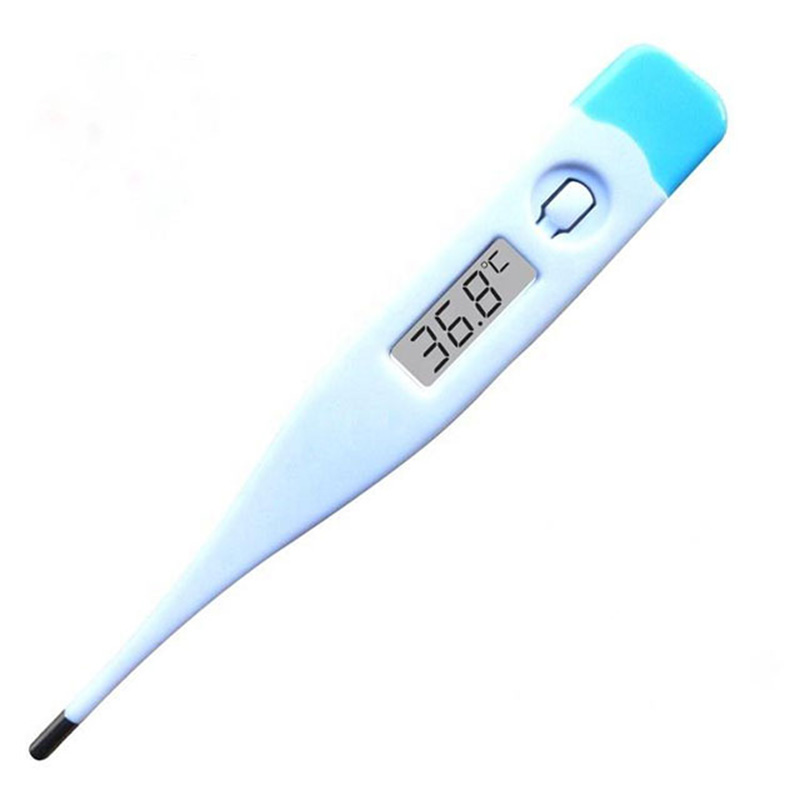Introduction to Thermometers: Non-Contact vs. Traditional
The ability to accurately measure body temperature is a cornerstone of effective medical care and personal health management. Thermometers, both non-contact and traditional contact types, play a crucial role in this process. With a variety of thermometers available, choosing the right type can be overwhelming. This article explores the distinctions between Non-Contact Thermometers, including custom, ODM, OEM, and wholesale variations, and traditional contact thermometers, providing insights into their usage, benefits, limitations, and factors influencing their selection.
Contact Thermometers: Types and Uses
Contact thermometers, often referred to as traditional thermometers, require direct skin contact to ascertain body temperature. They commonly use electronic heat sensors and are available in a variety of forms such as oral, rectal, armpit, and forehead thermometers. Each type serves distinct age groups and uses, providing reliable measurements under the right conditions. These thermometers have stood the test of time due to their simplicity and effectiveness in various medical and personal settings.
● Types of Contact Thermometers
Contact thermometers come in several forms. Oral thermometers are widely used for both adults and children, while rectal thermometers are preferred for infants due to their accuracy. Armpit thermometers offer a less invasive option, albeit often with reduced accuracy. Forehead thermometers provide a quick reading but require precise positioning and environmental control for accurate results.
● Suitable Applications for Different Age Groups
Each type of contact thermometer serves specific groups effectively. For infants and young children, rectal thermometers are highly recommended due to their precision. Oral thermometers, suitable for older children and adults, require cooperation to ensure closed-mouth readings. Armpit thermometers, though less accurate, provide a comfortable alternative for sensitive groups.
Pros and Cons of Contact Thermometers
Understanding the advantages and limitations of contact thermometers is essential for their effective usage.
● Advantages of Contact Thermometers
Contact thermometers offer reliable readings when used correctly, with digital displays ensuring easy interpretation of results. These thermometers are generally affordable, making them accessible for widespread use in homes and medical facilities.
● Potential Drawbacks and Limitations
Despite their reliability, contact thermometers require strict adherence to usage guidelines. Factors such as recent food or drink intake can skew oral thermometer readings, while discomfort and hygiene concerns may arise with rectal thermometers. Moreover, maintaining the required contact poses challenges for restless children or patients.
Remote Thermometers: An Overview
Remote thermometers, or non-contact thermometers, revolutionize temperature measurement by eliminating the need for physical contact. These devices have gained popularity in public health settings due to their convenience and safety, particularly noted during the COVID-19 pandemic.
● Functions and Mechanisms of Remote Thermometers
Non-contact thermometers use infrared technology to detect heat from the body, providing quick and hygienic temperature assessments. These devices come as temporal artery thermometers, which measure the temperature from the forehead, and tympanic thermometers that assess temperature via the ear canal.
● Popularity in Public Settings
With the advent of the pandemic, non-contact thermometers became the go-to choice for fever screening in airports, schools, and other public spaces. Their ability to deliver swift, contactless readings minimizes infection risk and allows for efficient population health monitoring.
Temporal Artery Thermometers: Benefits and Limitations
Temporal artery thermometers, a popular type of non-contact thermometer, come with unique advantages and some challenges.
● How Temporal Artery Thermometers Work
These thermometers measure the infrared heat emitted from the temporal artery on the forehead, offering a quick and non-invasive temperature check. Generally, they are easy to use and well-tolerated by patients of all ages.
● Accuracy Concerns and Situational Limitations
While temporal artery thermometers provide convenience, various factors can impact their accuracy. Direct sunlight, cold environments, and user positioning can skew readings. As such, they may be less reliable than contact thermometers in certain conditions, necessitating caution in their use.
Tympanic Thermometers: Features and Challenges
Tympanic thermometers, another variant of non-contact thermometers, gauge temperature through infrared rays directed into the ear canal.
● Functionality of Infrared Ear Thermometers
Infrared ear thermometers offer quick results, typically within a few seconds, making them suitable for patients across different age groups. Their design ensures comfort and ease, encouraging frequent use.
● Factors Affecting Accuracy in Ear Thermometers
While tympanic thermometers are user-friendly, they require precise placement to ensure accuracy. Earwax, small or curved ear canals, and improper positioning can compromise their reliability. Therefore, these thermometers are not recommended for newborns or infants under six months.
Mercury Thermometers: Outdated and Hazardous
Once a common household item, mercury thermometers have largely fallen out of favor due to associated health risks.
● Historical Usage of Mercury Thermometers
Mercury thermometers rely on mercury expansion in a glass tube to measure temperature. They were widely used due to their precision and simplicity, but concerns over mercury exposure have led to their decline in use.
● Environmental and Health Risks of Mercury
The major downside of mercury thermometers is the risk of breakage and mercury exposure, which poses health and environmental hazards. As a result, their sale and use are heavily regulated, with digital and infrared alternatives gaining preference.
Situational Use: Choosing the Right Thermometer
Selecting the appropriate thermometer involves careful consideration of various factors such as age group, required accuracy, and situational constraints.
● Factors Influencing Thermometer Choice
Several aspects influence the choice of a thermometer, including the patient's age, the required level of accuracy, ease of use, and cost. Non-contact thermometers offer convenience for active settings, while contact thermometers may be preferred for precise readings in controlled environments.
● Considerations for Specific Populations
Population-specific needs also guide thermometer selection. For instance, infants and toddlers benefit from rectal thermometers' accuracy, whereas non-contact thermometers provide a stress-free option for school and public health screenings.
Impact of Environment and Technique on Accuracy
Both contact and non-contact thermometers require specific conditions and techniques for optimal accuracy.
● Environmental Factors Affecting Thermometer Readings
External elements such as ambient temperature, airflow, and humidity can influence thermometer readings. Ensuring an optimal environment enhances measurement reliability, particularly for non-contact devices susceptible to external variables.
● Importance of Proper Usage Techniques
Proper technique is crucial in obtaining accurate readings. Consistent positioning, appropriate waiting periods before measurement, and adherence to manufacturer's guidelines can mitigate inaccuracies in both contact and non-contact thermometers.
Conclusion: Balancing Safety, Accuracy, and Cost
Evaluating thermometers involves a balance between safety, accuracy, and cost considerations. Non-contact thermometers, including custom, ODM, OEM, and wholesale variants, offer unparalleled convenience and safety in public settings. However, traditional contact thermometers remain indispensable in clinical settings where accuracy is paramount. As technology evolves, consumers and healthcare providers must make informed choices best suited to their needs, considering the options available from reputable manufacturers and suppliers.
Leis is a prominent medical supplier, excelling in the design, development, and manufacturing of high-quality medical devices. With an experienced team dedicated to excellence, Leis offers a comprehensive product line, including digital and infrared thermometers, among others. Committed to quality and service, Leis adheres to ISO13485 standards and holds CE certification, establishing itself as a trusted partner in the medical field. The company’s dedication to innovation and customer satisfaction positions it as a leader in the global medical device industry.

